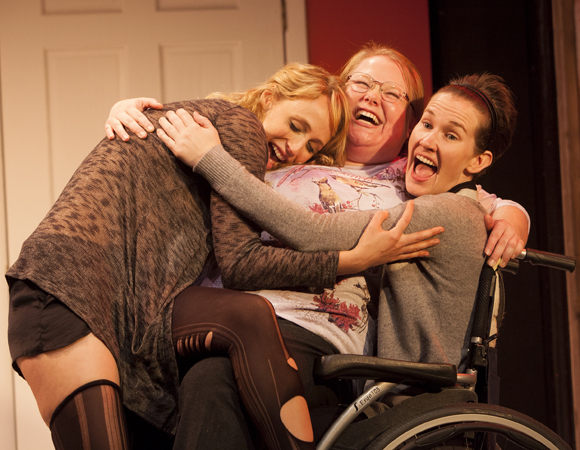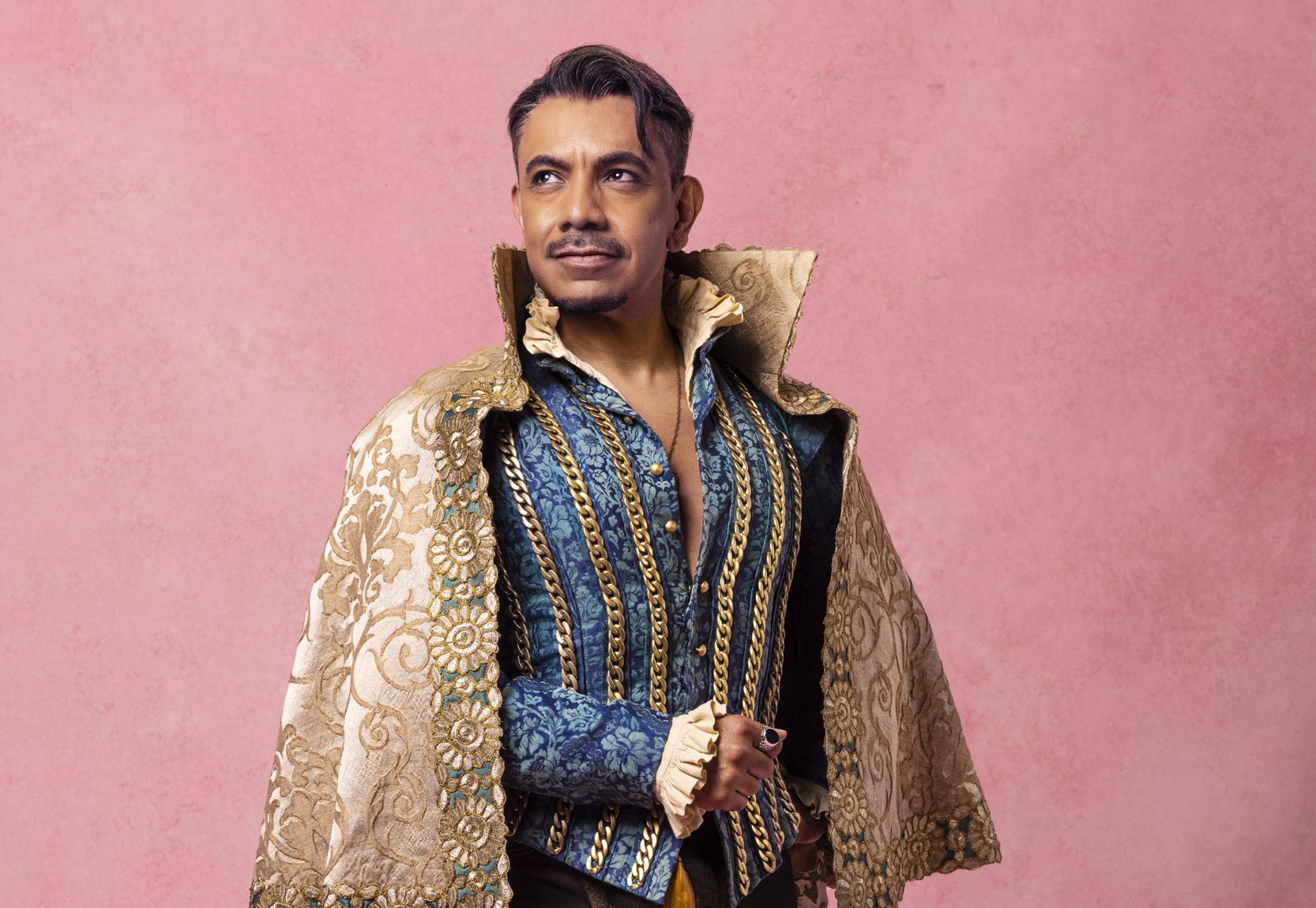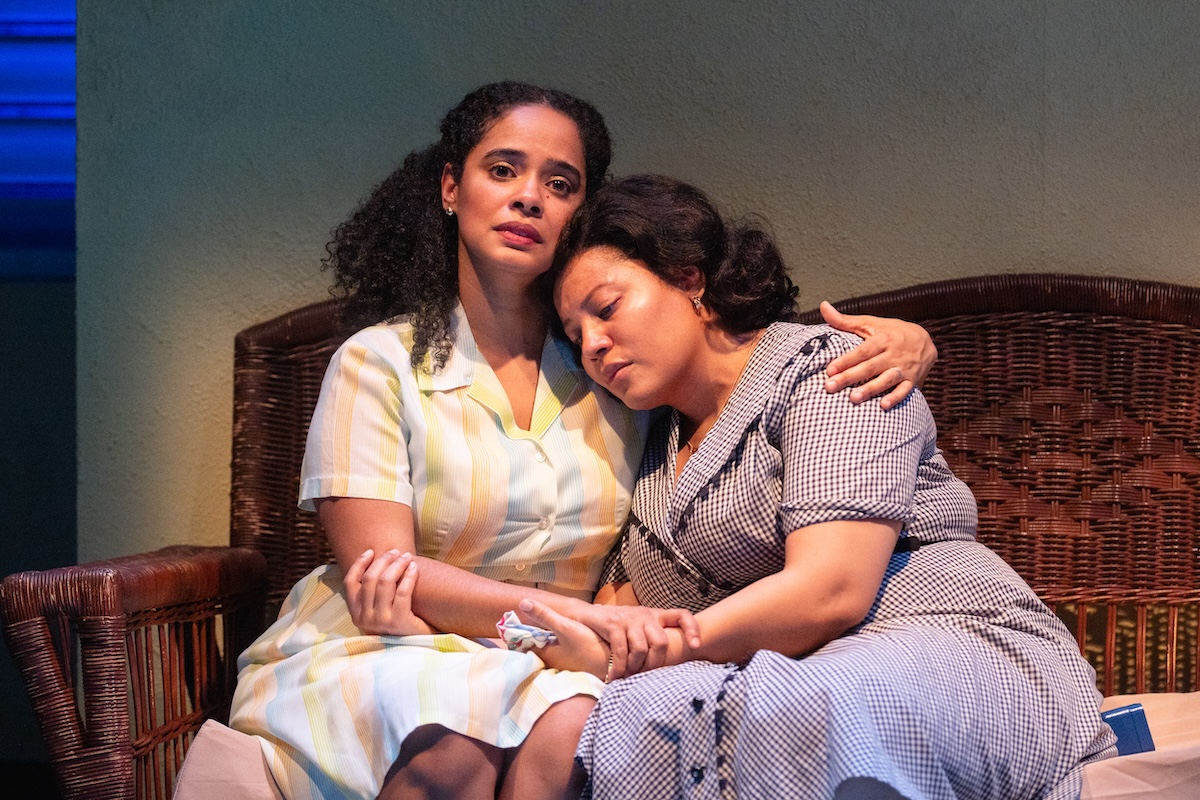How to Make Friends and Then Kill Them

(© Hal Horowitz)
If you’re gonna go weird, you have to commit to it. That’s the thing most playwrights forget. In most contemporary plays that can be classified as “weird,” the weirdness usually fades out by the end; it is transformed into “quirky,” “twee,” or even worse, “precious.”
Thank God, then, for the warped creative mind of playwright/actress Halley Feiffer, who harnesses the weird to full, gory effect in How to Make Friends and Then Kill Them, an uproarious and deeply unsettling new dark comedy at Rattlestick Playwrights Theater. In a pitch-perfectly piquant staging directed by Kip Fagan, this one embraces the weird and manages to make the audience squirm in gleeful horror not once, not thrice, but six times.
At the play’s center are a pair of sisters, Ada (Katya Campbell), the pretty one with low self-esteem, and Sam (Keira Keeley), the smart, cunning one with a sly way of knowing just which buttons to push. When wannabe actress Ada suddenly makes a friend in the form of the cripplingly shy, pockmarked Dorrie (Jen Ponton), Sam, an aspiring cartoonist, won’t let it slide. Feiffer charts the sisters’ relationship with their new “friend” from youth to adulthood. And if you thought they were screwed up as innocent kids who danced around the room to Toy Story theme “You’ve Got a Friend in Me,” just wait until they become less innocent, disenchanted grown-ups.
Perhaps the script owns its weirdness a bit too fully here and there, but overall, it’s an eye-popping introduction to Feiffer’s work as a playwright. Most impressive is the way she turns the “beautiful, stupid blonde chick” stereotype on its ear. Ada — friendless (except for Dorrie) — is a sad sack lacking in confidence who eventually turns to the bottle because her fear of rejection is too intense. (One of the play’s six squirm moments involves Ada’s descent into alcoholism when we find out that her and Sam’s drink of choice is a Jack Daniels and milk.)
Ada is played with an immensely recognizable humanity by Campbell, who impressively charts the character’s descent from child to adult. She is evenly matched by the stern, scarily manipulative Keeley, and Ponton, in a smashing off-Broadway debut that imbues the innocent Dorrie with the most frightening of human qualities: unconditional love. As a trio, they’re unafraid to play up the intensely physical nature of Fagan’s production, prowling around Andromache Chalfant’s eerie set (even more eerily lit by Tyler Micoleau) like caged lions at feeding time. When the characters grow older, it’s with a simple change in Jessica Pabst’s age-appropriate costumes.
Equally laugh-out-loud funny, jaw-droppingly gross, and thoroughly sad, How to Make Friends and Then Kill Them isn’t for everyone — especially if you don’t have a high tolerance for face-licking. But even those people, whoever they are, will instantly recognize how Feiffer’s unique, refreshing voice is one to which attention should be paid.











